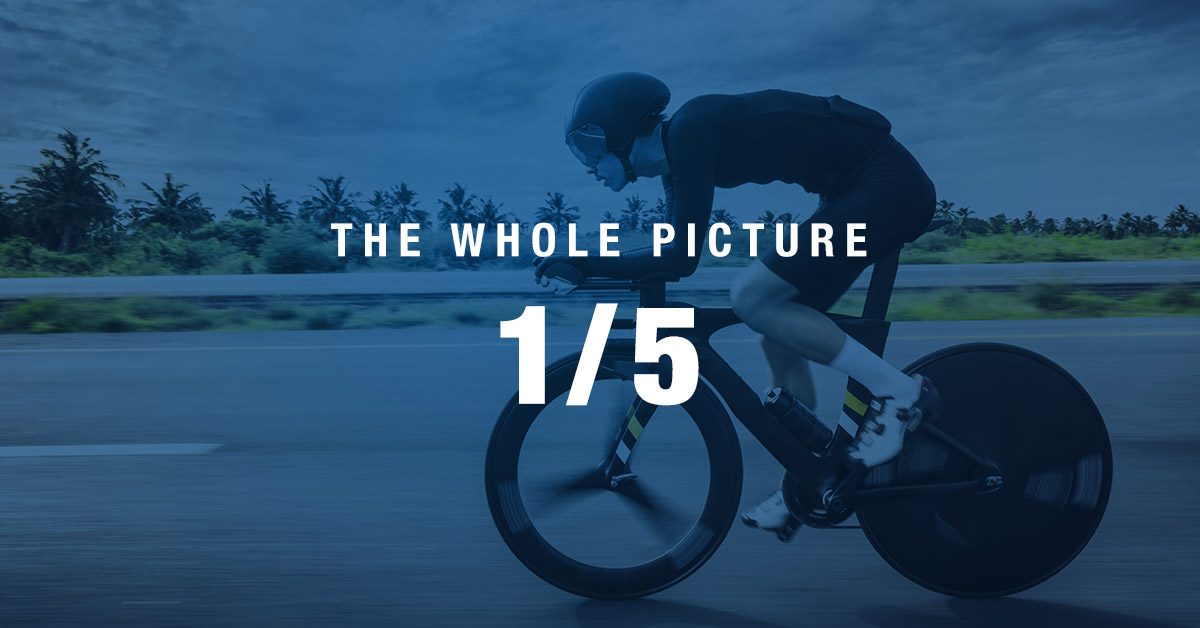This is Part 1 of a five-part series on total load, the cumulative training
What is total load, anyway?
Simply put, “total load” is a way to think about all of the stress that athletes encounter in their lives, both positive and negative. In addition to an athlete’s workout, other factors such as sleep, diet, and mental stress impact a body’s ability to train, recover, and perform. Many athletes don’t realize that factors such as work stress and travel can really impact their ability to train and perform well.
We will explore the factors that comprise total load in a five-part series, starting with this introduction. A deep dive into the major components of total load will follow:
- Total Load Overview: Why does it matter? What are the key components?
- Physical Stress: Training, endurance, high-intensity workouts, strength
and conditioning stress - Mental Stress: Workplace, emotional, travel and jet lag stress
- Sleep and Diet: The two primary recovery enablers
- Active Recovery: Speeding up recovery using light workouts, yoga, and Pilates
Why does total load matter?
The new ethos of marginal gains pushes amateur and elite competitors to optimize the volume and intensity of their training in pursuit of maximum performance. When combined with psychological and non-sport stresses, maladaptation is increasingly likely.
The concept of
That study led to a two-part statement on identifying and managing total load published in the British Journal of Sports Medicine. The authors concluded that it was important to monitor and measure the following factors to better understand total load:
- Internal and external load
- Consistency of training load over time
- Psychological stress
- Travel
- Illness
Only when considering all of these factors can athletes and coaches achieve a comprehensive picture of
What is external and internal load?
External load describes the physical work performed during training and workouts. External load measures include traditional training metrics such as power, speed, distance, duration, and frequency. Research has demonstrated that some newer external load measures such as Acute:Chronic training load ratio (of which TSB is an example), and GPS-derived metrics (acceleration, high-speed running used in team sports) predict injury more effectively compared to traditional ones.
Internal load refers to the body’s stress response to the external load. Examples might include an increase in hormones such as cortisol or physical damage to muscle fibers. The range of internal load measures is less
New research
The General Adaptation Syndrome model, which suggests that a given level of training load will produce a repeatable adaptation in each athlete, has been used for around 90 years to predict an athlete’s response to training. However, in his 2017 thought-provoking paper, Dr. John Kiely addressed the relationship between total load and the body’s response that suggested otherwise.
Kiely argues that the old General Adaptation Syndrome model is far too simplistic, as neither our body’s homeostasis nor our stress response
Non-training Stress
For all but the most cosseted professional athletes, training is not the biggest source of stress on the body. Factors such as mental stress, frequent travel, inconsistent diet, and sleep loss represent more significant sources of stress for many athletes with busy lives.
In a recent interview with a coach of high school and college-age athletes, we observed that mental stress from work assignments and social pressures frequently led to poor diet and sleep. As a result, those factors further compounded the imbalance between total load and recovery.
It is important to consider all of the sources of stress when coaching to prevent such an imbalance, but it can be difficult to identify when life begins to fall out of balance. One way we can determine the key stress influences for an individual is to track an all-inclusive stress measure, such as
Remember that it’s not just training that stresses the body, it’s
The next article in this five-part series will take a closer look at how physical stress and training contribute to total load.



